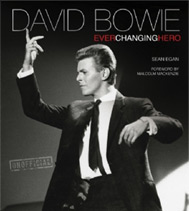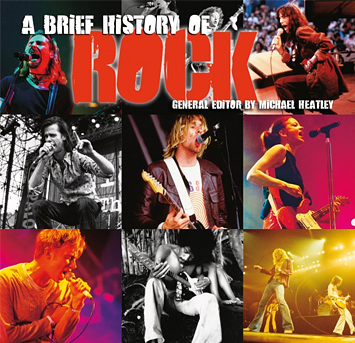of labelling his instruments ‘IHS’ (Iesus hominum salvator, ‘Jesus, the Saviour of Mankind’), who is recognized as the most outstanding scion of this house. Antonio Stradivari No other violin maker, before or since, has ever achieved the status of Antonio Stradivari (1644–1737). Known by the Latinized version of his name, ‘Stradivarius’, it is believed that he ...
of the opportunities offered by electronic technology – namely amplification and access to a broader palette of synthesized (or sampled) sound. Electric Stringed Instruments Stringed instruments, such as the violin, viola, cello and double bass, can all be effectively amplified through the use of built-in microphones or, more commonly, electronic pickups. Pickups are either magnetic ...
It is still possible to find old books which explain cheerily that the viol was an early version of the violin, now superseded. It is worth saying straight away that this is not true. These two related but different families of instruments both evolved from the early sixteenth century in northern Italy, but made different sounds and were played ...
The basic construction of the violin, with its waisted or figure-of-eight body (with a hard-wood back, usually maple, and a softer front, usually spruce), was established early in the sixteenth century. The strings (tuned, from the top downwards, as E, A, D and G) run from a peg box, where tension can ...
The violin family is a group of fretless bowed stringed instruments that has its roots in Italy. Four instruments make up the family: the violin, the viola, the violoncello (commonly abbreviated to cello), and the double bass. The characteristic body shape is one of the most recognizable in music; the particular acoustic properties this shape imparts have made the ...
fingerboard and bridge made it easier to play individual strings, and more were added. Medieval bowed instruments were usually held against the chest or shoulder, unlike the modern violin, which is tucked under the chin. Although Arabs had already begun playing a kind of rebec placed upright on the lap, this position was not used in western ...
Nordic bowed lyres, known in Finland as jouhikko, in Estonia hiiu-kannel and Sweden as stråkharpa, comprise a more or less rectangular soundbox, across which run three or sometimes four horsehair strings. These pass from a tailpiece across a bridge resting on the soundboard to tuning pegs on a flat extension of the body. This extended section has ...
Originally (and still occasionally) known as the ‘violoncello’, or ‘little violone’, the cello is tuned in fifths like the violin and viola, running bottom to top, C, G, d, a, the same tuning as a viola, but an octave lower. There were early experiments with a smaller five-stringed instrument (with an additional E string ...
versions of the same design. In the sixteenth century, the viol family was developed like this, consisting of treble, tenor and bass viol, as were the violin family, the recorder family, the lute family and the crumhorn family. Cornetts, shawms, trombones and flutes also came in different sizes. Besides consort instruments, there were ...
suitable for practice, composition and private performance. The repertory written for it over the past few years is surprisingly large. Styles & Forms | Renaissance | Classical Instruments | Violin | Early Baroque | Classical ...
them minor) to write concertos and other concert hall works for it – among them an Adagio For Eight Concertinas in E and a Quintet in D for concertina, violin, viola, cello and piano by the Dutch composer Edouard Silas (1827–1909). Concertina Composers Other concertina composers include Giulio Regondi (1827–72), Richard Blagrave (1826–95), George Case, Wheatstone himself ...
A decibel is a measurement of the ratio between two quantities, and is used as a comparator in many branches of physics. In acoustics, decibels (or dB, for short) are used to indicate the loudness of a single sound in comparison to a fixed reference sound. This reference is the quietest sound audible to the healthy human ear ...
orchestra. Like other members of the viol family, it initially carried frets – tiny knotted pieces of gut that measured out the fingerboard. As it was adopted into the violin family, it settled down as a four-stringed instrument, shed its frets and standardized its tuning in fourths from bottom to top: E’, A’, D, G (the same ...
ensemble must work well musically. The instruments need to form an effective team, combining their individual strengths in the most efficient way possible. For instance the string trio of violin, viola and cello tends to work better than that of three violas, as between them the violin, viola and cello possess a much wider range and a ...
by the fingers of the player, or by tightening a screw mechanism. The most common playing position for fiddles is to hold them not under the chin like a violin, but vertically, with the soundbox resting either on the knee or the ground, and bow them in a cello-like fashion (the bow-hand palm facing variously upward or ...
AUTHORITATIVE
An extensive music information resource, bringing together the talents and expertise of a wide range of editors and musicologists, including Stanley Sadie, Charles Wilson, Paul Du Noyer, Tony Byworth, Bob Allen, Howard Mandel, Cliff Douse, William Schafer, John Wilson...
CURATED
Classical, Rock, Blues, Jazz, Country and more. Flame Tree has been making encyclopaedias and guides about music for over 20 years. Now Flame Tree Pro brings together a huge canon of carefully curated information on genres, styles, artists and instruments. It's a perfect tool for study, and entertaining too, a great companion to our music books.

David Bowie
Fantastic new, unofficial biography covers
his life, music, art and movies, with a
sweep of incredible photographs.


